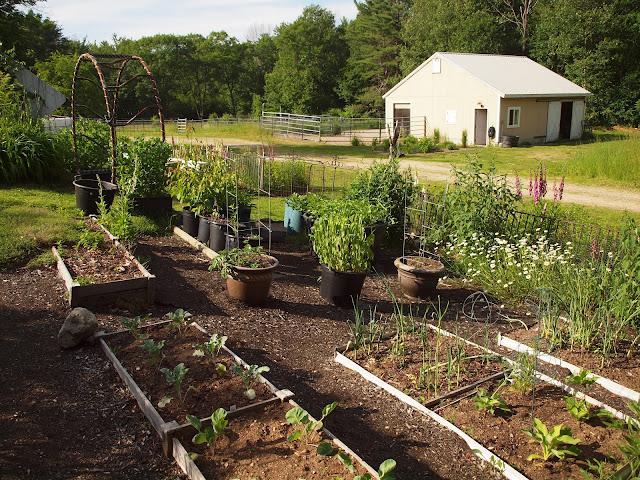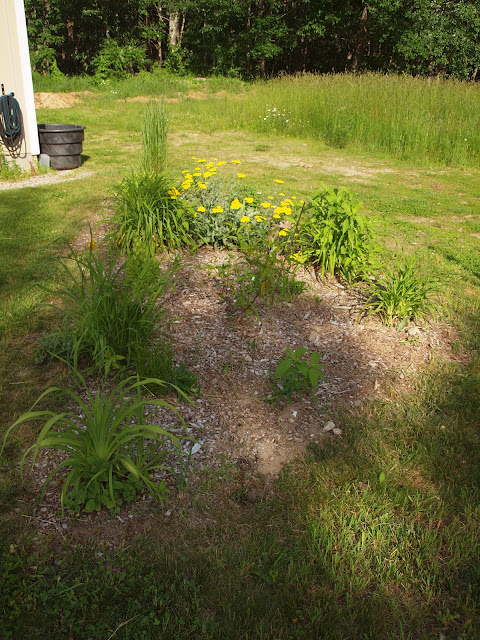Ah, dreams. Projects. Good intentions.
Weather. Time. Lack of ambition.
My idea to turn the leach field bank into a corn and squash bounty has hit many snags in the last few years. Once again the weeds and grass outpaced my gumption and I was looking at a three foot tall wall of green. I even whined to my mother the other day that I just didn't want to tackle this project. Then I had a change of heart.
Beginning today and lasting through the next three days, we are under a dangerous heat watch. Temperatures will climb into the 90s with heat indexes potentially reaching 104*. I needed to get at least one project done while it was still cool. I had just mowed all the lawn areas and was frustrated by the bank project lying fallow, and so a wild hair was born. I pulled out my trusty wheeled trimmer and my mulching lawn mower, and got to work laying waste to that wall of green.
 |
| pre-mowing |
 |
| post trimming |
 |
| post mowing |
Yaaaaaaaassssssss! Doesn't that look so much better? What really floored me was how much the flowers in the pathetic wildflower meadow area really popped once that mess was gone.
I had purchased some Blue Hubbard and acorn squash plants and wanted to at least get those planted before the heat set in, so I dotted them along the bank.
Now I need to keep this momentum up, because over the next few days I should lay cardboard barriers around my squash plants and cover them with mulch to keep the grass from growing back and overwhelming them. If I can get just the immediate areas around the plants done, covering and mulching the rest won't seem like such a chore. It's too late to plant corn this year, but I'll be in a much better place next year to plant.
Over on the other side of the property, my cottage gardens are looking amazing.
I can't believe how much it's filled out in a year! I'm sure I have the extreme wet spring to thank for that. The foxglove are just amazing this year, too, and lend a real English garden feel to the beds. I was so happy to find my pastel yarrows that I grew from seed returned, as well as the blue fescue grasses and one or two of the baptisia.
In the vegetable beds it's absolute chaos. I haven't been doing well keeping the weeds at bay and the sides of the garden are completely overgrown with grasses.
The veg proper side looks a tiny bit more controlled.
In the polytunnel, the tomatoes and peppers are doing great. I actually have a tomato on already!
The little water feature is doing better this year with less algae growth. I've used pond shade dye to darken the water, and have added some oxygenating plants. I've had to cull duckweed twice, but that's the tadpole's food source, so I leave what I can. I finally brought my little otter statue out of storage and put it where it belongs, too.
The hot gardens by the mule barn are doing well, but I lost a lot of plants this winter. The kniphofia I planted didn't make it, and the crocosmia are sad at best. The little peach trees are thriving, though! And the perennial red mums came back, which is great. The Lion King Dutch Iris I planted are blooming, and do not disappoint. My mother will look at them and say yuck - muddy colors, but I think they're beautiful. I need to add more plants that will give it color earlier in the year, but there aren't many May/June plants that have the red, orange, or yellow colors that I'm looking for. I may have to move on to annuals next year for the inbetween times. The tulipa acuminta were stunning this spring, so I'll definitely add more this autumn for next year.




















































